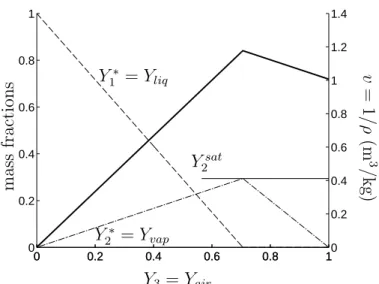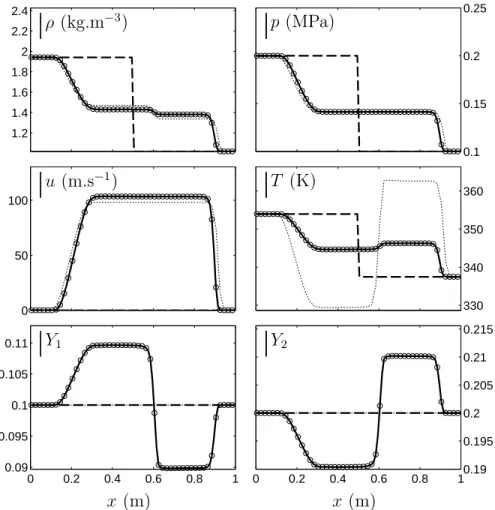A simple and fast phase transition relaxation solver for compressible multicomponent two-phase flows
Texte intégral
Figure
![Table 1: Noble Abel Stiffened Gas (NASG) coefficients for water and air determined in the temperature range [273 − 500 K]](https://thumb-eu.123doks.com/thumbv2/123doknet/14317503.496421/10.918.259.661.235.438/table-noble-abel-stiffened-nasg-coefficients-determined-temperature.webp)
![Figure 1: Comparison between experimental and theoretical saturation curves for liquid water and steam with coefficients determined in the temperature range [273 − 500 K]](https://thumb-eu.123doks.com/thumbv2/123doknet/14317503.496421/11.918.184.738.270.852/figure-comparison-experimental-theoretical-saturation-coefficients-determined-temperature.webp)


Documents relatifs
Observed vs Controlled Order Parameters The competence and coverage maps (Figs. 1, 3) sug- gest that C4.5 error might be related to the coverage P c of the underlying target
3.3 Enhancing the Relaxation Riemann Solver by Sub-Iteration Algorithm 2.1 requires values for traces at phase boundaries as they appear in solutions of Riemann problems.. In
Consistent mass and momentum transport for simulating incompressible interfacial flows with large density ratios using the level set method. Contribution à l’étude des
27 (2005), 914–936], we propose a relaxation scheme for the numerical simulation of one-dimensional two-phase multi-component flows governed by a drift-flux model, the main features
We show first that the second sound overdamping leads to much longer relaxation times, as observed by ultrasonic measurements.. We show then that the technique used
In this paragraph, we present a classical model to describe the thermodynamics behavior of mixtures. With this model, it is possible to predict some characteristics of
2014 A model based on second rank tensor orientational properties of smectic phases is developed.. The model predicts a second order smectic A-smectic C phase transition
Essentially, four flux domains are observed: the first connecting the northernmost part of the positive polarity (i.e., P0) to the negative flux N3 at its south (green field lines





